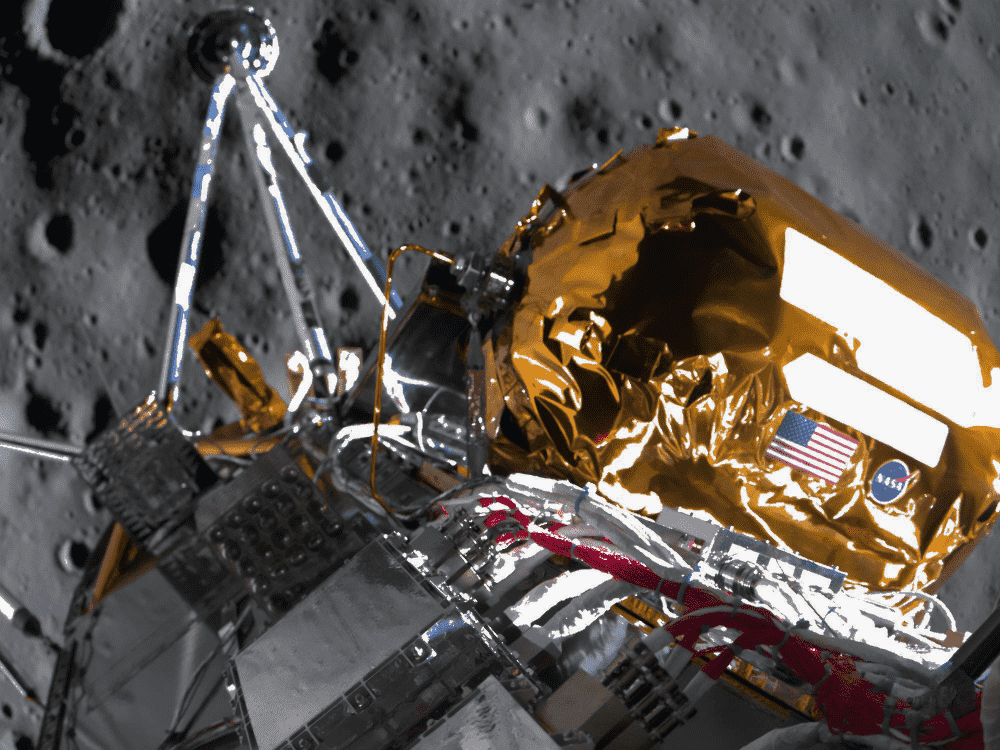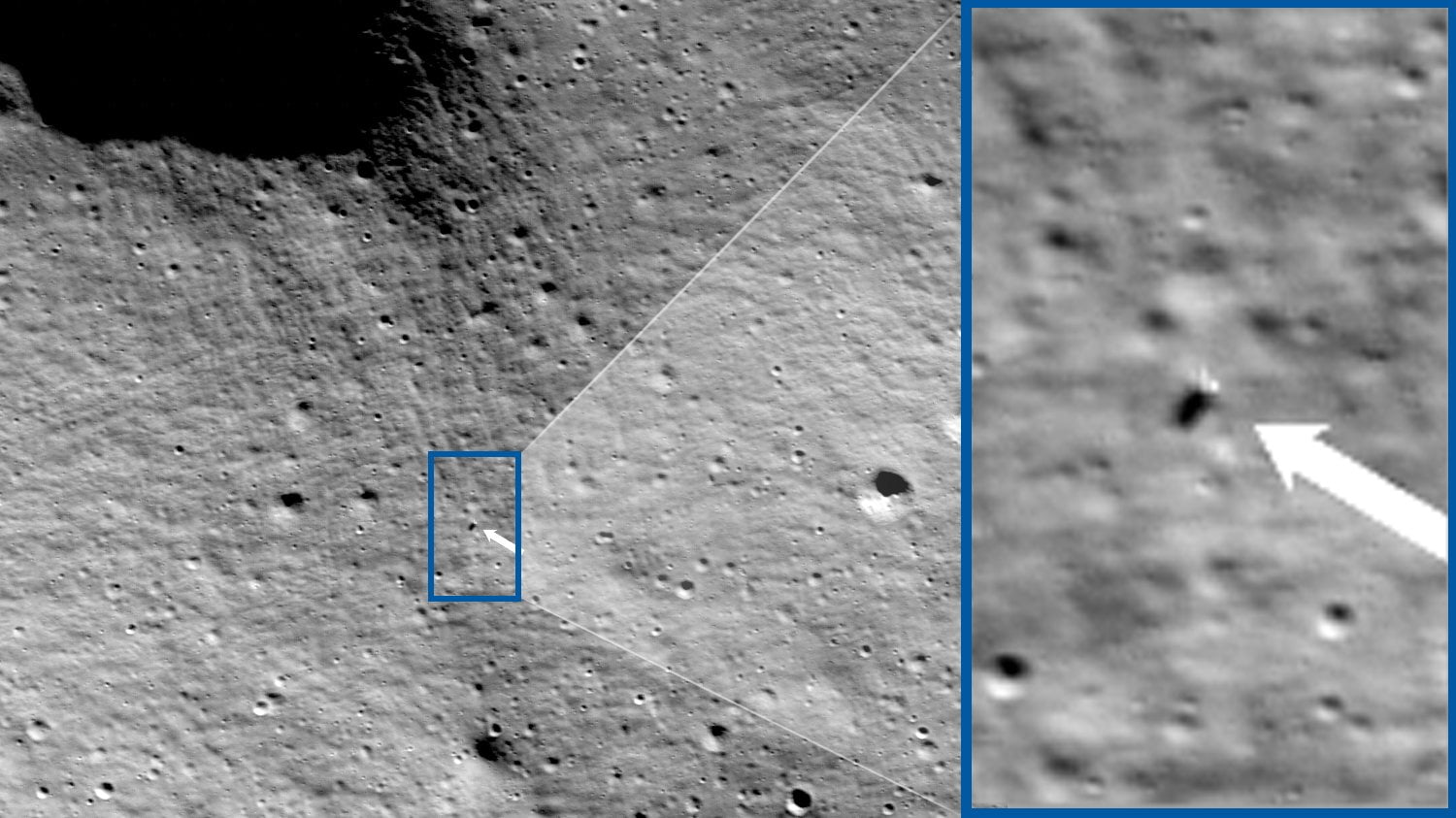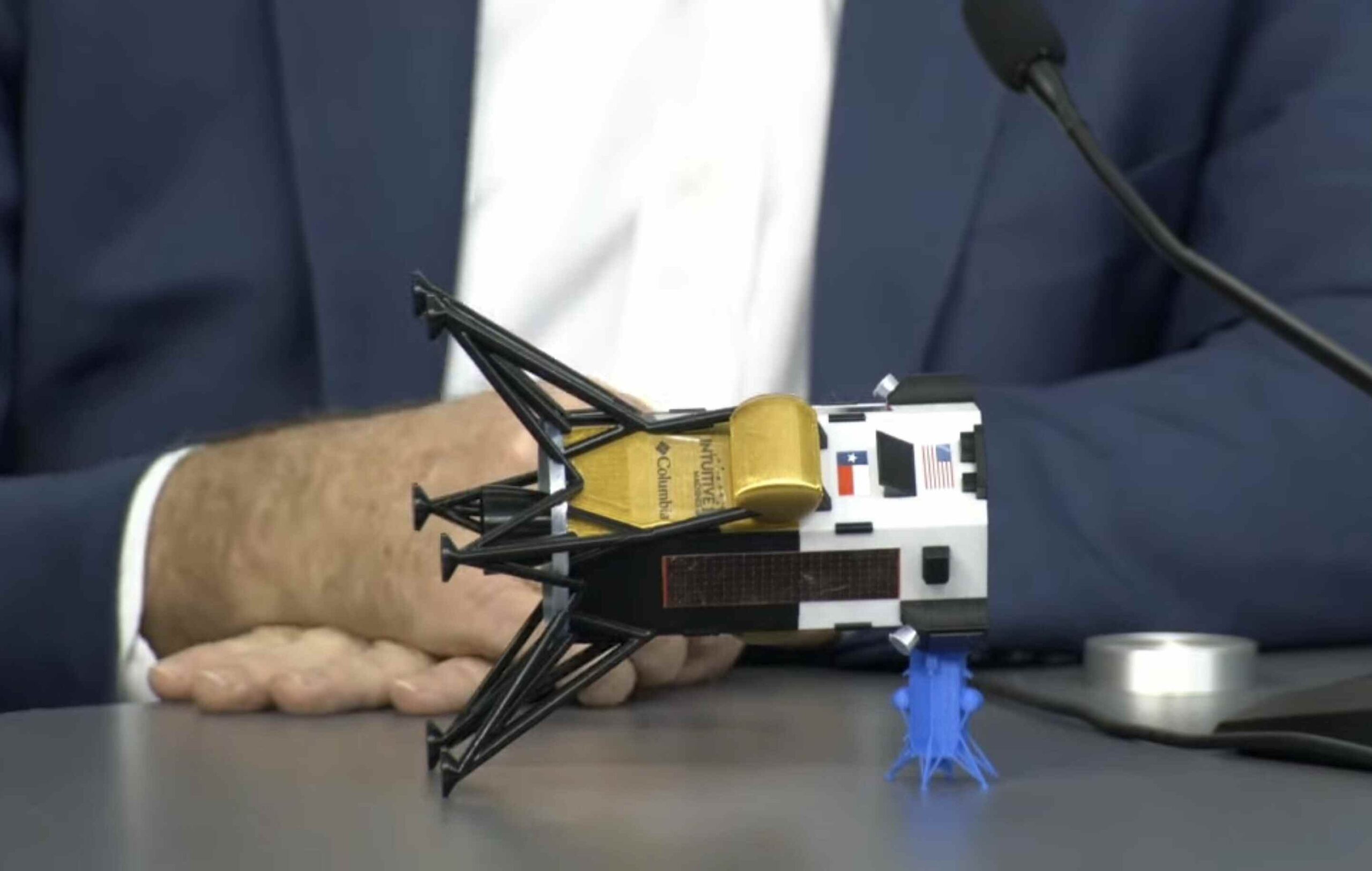Intuitive Machine’s Nova-C Odessus Lander stopped working on Thursday but lasted longer than the expectation of the company after a side-way landing near the Malapert A crater on the south pole of the moon.
On February 22, Odessus achieved a significant milestone as it touched down, marking a momentous accomplishment for the United States. This landing comes 50 years after the last American mission, the Apollo, touched down on the moon.
Nova-C Odessus Lander Halts Operations After One Week
It was designed for one lunar day equivalent to 14 days on Earth but it was landed at noon on the lunar surface so its life span reduced to around 7 days on Earth, The unusual landing of the Odessus adversely impacted both communication and solar charging capabilities. But NASA managed to extract all the scientific information from its six payloads before it went into permanent sleep.
Following the landing of Nova-C Odessus Lander, two of the spacecraft’s communication antennae were disabled, pointing in the wrong direction. Additionally, its solar panels were misaligned, limiting the vehicle’s capacity to recharge its batteries.

Flight readiness teams neglected to manually unlock a safety switch before launch, preventing the subsequent activation of the vehicle’s laser-guided range finders. This human error forced flight engineers to hurriedly improvise an alternative solution during lunar orbit. The consequences of this oversight also had the potential to impact the proper landing of the Odessus and delays in the landing schedule.
It marked the inaugural lunar landing achieved by a commercially manufactured and operated space vehicle. This historic event also represents the first lunar landing under NASA’s Artemis program, which seeks to return astronauts to Earth’s natural satellite within this decade.

On February 22, Houston-based Intuitive Machines achieved a historic milestone as Odysseus became the first commercially manufactured and operated space vehicle to successfully land on the moon without crashing. This groundbreaking event marked not only a significant accomplishment for the private company but also represented the inaugural lunar landing under NASA’s Artemis program.
Until now, only the space agencies of four other countries— the former Soviet Union, China, India, and, as of last month, Japan—have successfully achieved a “soft” moon landing, with Japan’s lander also experiencing a tip-over onto its side.
You can also read the timeline of every important movement of Odessus Lander from launch to landing process.
Read also After Ingenuity, NASA Plans to Send Giant Solar-Powered Plane ‘Maggie’ to Mars
Read also Meet Vyommitra: The AI-powered Humanoid Astronaut of India’s Gaganyaan Mission


